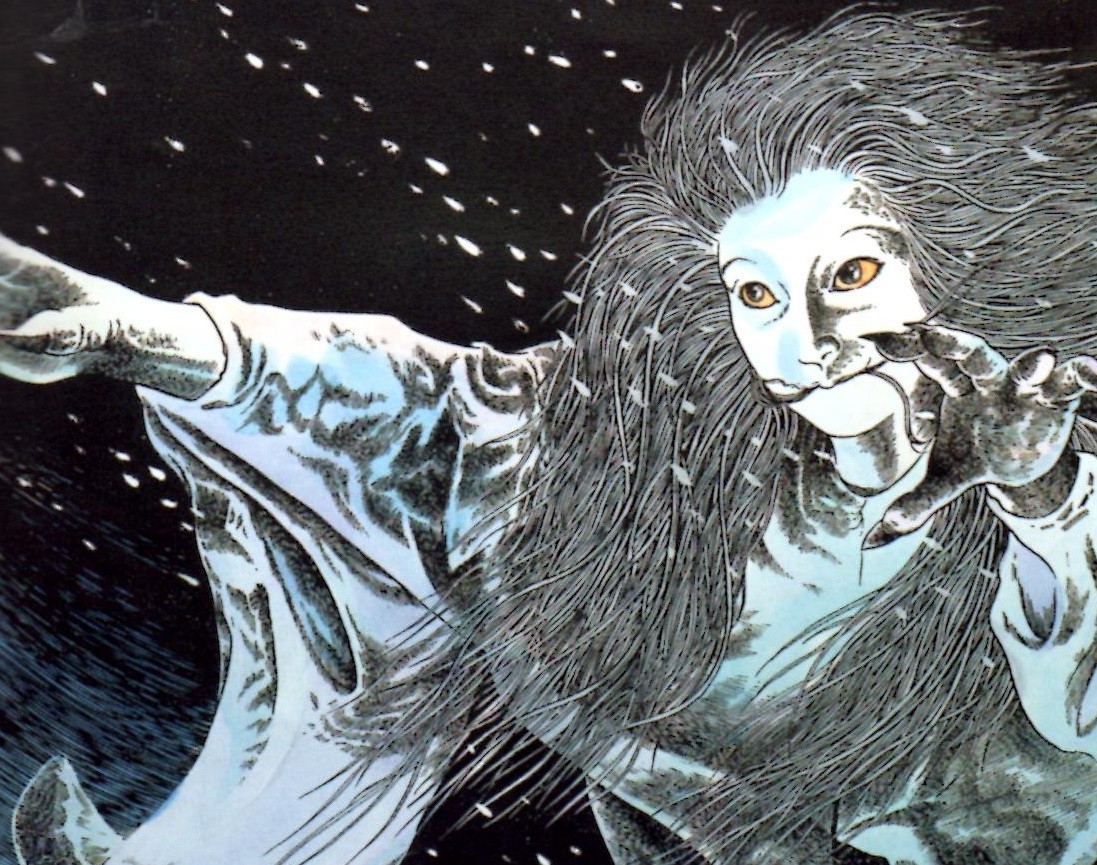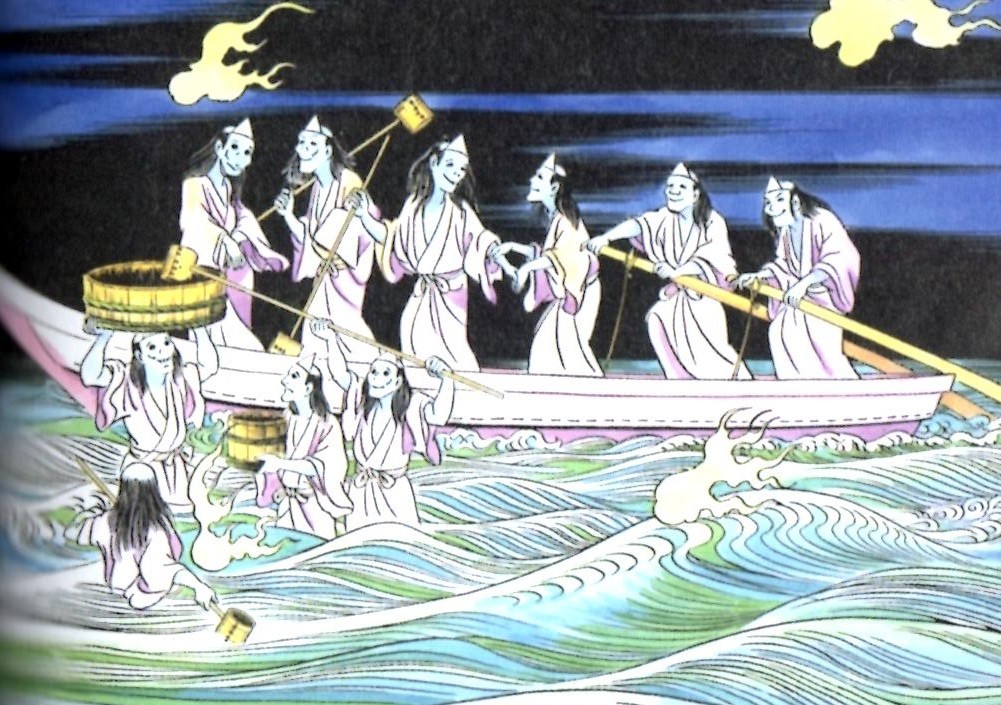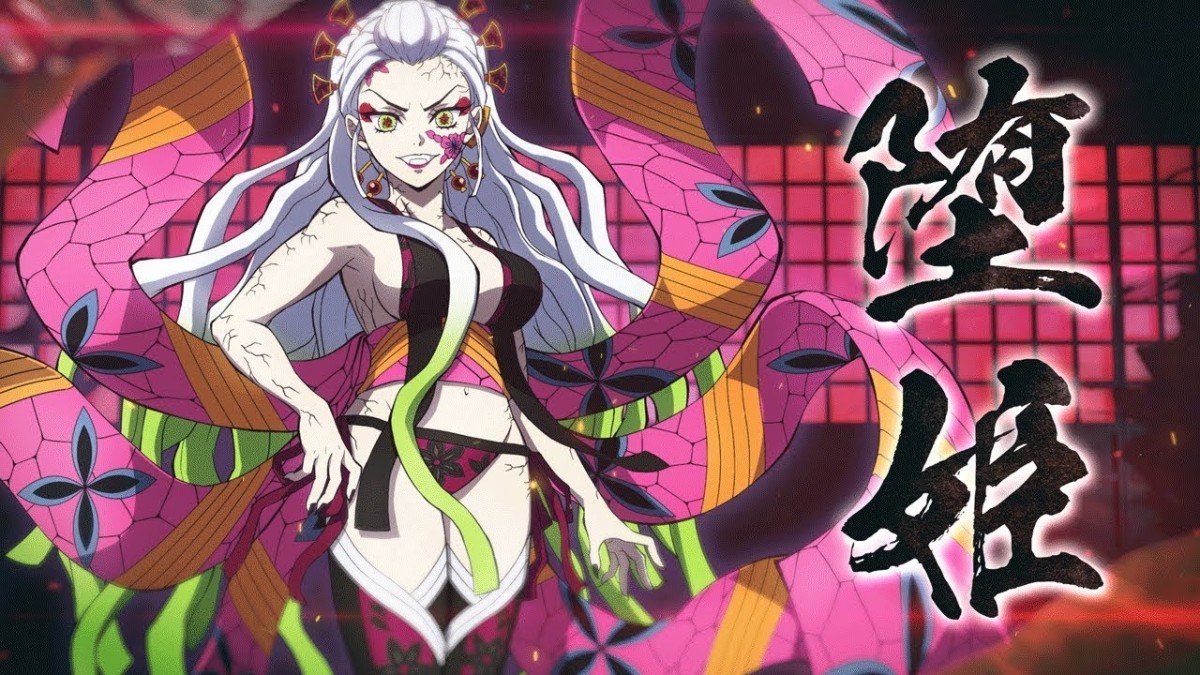Many people were fascinated by the Daki character of Demon Slayer, but does such a creature exist in Japanese culture? Daki is actually a Yokai that weaves stories and legends through the ages.
In this article, we'll explore the origin and characteristics of the Daki in Japanese culture and examine how Demon Slayer's Daki character incorporates these traditions into her depiction.
Daki [ダキ] is usually written in katakana, but may reference [唾棄] which means contempt, abomination, and also the verb [抱く] which means to embrace in Japanese, an action she uses on her victims.
We also recommend reading: Jorogumo: The Seductive Spider-Youkai of Japanese Folklore
Daki - Yokai of Sea Cliffs
The Daki is known for its cunning and appetite for anglers. This yōkai hides along the seaside cliffs, waiting for an opportunity to attack its victims.
The Daki legend is believed to originate from Kakarashima, an island off the north coast of Saga Prefecture, and is a local variation of the iso onna, yōkai women who appear near the seashore and feed on sailors and fishermen.
When she sees a person cooking fish on a fire by the sea, she approaches them disguised as a beggar, asking for a fish. Regardless of the answer, the Daki only seeks to get close enough to strike and drain the life force from its victims.
Fishermen on the Saga Islands are particularly afraid of the Daki and have developed ways to protect themselves against it. When stopping on an island to cook fish, they usually drop only the anchor, avoiding tying the boat with mooring lines. That way, if they need to escape quickly, they can simply cut the anchor line and sail away.

The Legend of the Fisherman and His Sons
A popular legend about the Daki tells of a fisherman and his two sons who went swimming near an island. After a while they went to the beach and lit a fire. Soon, a strange woman approached them, asking for a fish. The father, an experienced fisherman, immediately suspected that the woman was a Daki.
He instructed his sons to go back to the boat and catch a fish. However, the children did not find any fish, as they were swimming, not fishing. The father feigned confusion and went over to the boat as if to help them search. Once all three were on the boat, he cut the mooring line and the boat was driven out to sea.
The woman, now revealed to be Daki, ran to the edge of the island and screamed angrily, frustrated at having lost her prey. The fisherman's intelligence and caution saved his family's life and exemplified the importance of knowing and respecting local stories and legends.
Read also: List of legendary creatures of Japan
Features of Daki
The Daki is a supernatural figure often associated with stories of seduction and betrayal. Some legends point out that the Daki is an evil spirit that transforms into an attractive woman to lure and seduce unsuspecting men, while other stories portray the Daki as a woman who made a pact with supernatural forces to obtain eternal power and youth.
Depictions of the Daki vary by legend and region of Japan. In some stories, the Daki is portrayed as a beautiful woman with long hair and seductive eyes. In others, she is depicted as a creature with wings or a half-human, half-animal figure. A common feature in many legends is the Daki's ability to transform into different forms, allowing it to trick its victims and manipulate them.
The Daki figure is also associated with the idea of temptation and perdition. In many legends, men who fall in love with the Daki suffer dire consequences, such as the loss of their sanity, fortune or even life. In this way, the Daki functions as a warning symbol about the dangers of unbridled desire and the temptations that can lead to ruin.

The article is still halfway through, but we recommend also reading:
Daki in Contemporary Literature and Media
The figure of the Daki in Japanese culture has influenced not only the creation of characters in animated series such as Demon Slayer, but also extends to other forms of contemporary media and literature. The Daki is often depicted as an intriguing and enigmatic female character who serves as a representation of the dangers and temptations of unbridled passion and desire.
In many books, movies and television shows, the Daki is portrayed as a femme fatale, an attractive and seductive woman who manipulates the men around her to achieve her goals. The Daki figure can also be found in video games, where she serves as a powerful and attractive antagonist.
In addition, the image of the Daki in Japanese culture has also influenced the creation of characters in other cultures, where the figure of the seductive and dangerous woman is a recurring theme in several stories. This demonstrates the universality of the Daki myth and its ability to adapt and reinvent itself in different cultural contexts.
We recommend reading: 10 Ways to Say “Demon” in Japanese

Daki in Demon Slayer - Kimetsu no Yaiba
Kimetsu no Yaiba's character Daki is one of the series' antagonists and a member of the Twelve Demon Moons, a group of powerful demons who serve the main antagonist, Muzan Kibutsuji. Daki is a seductive and manipulative demon who uses her beauty and charm to lure and control her victims.
Daki's name [堕姫] of "Demon Slayer" literally means Princess of Degeneration. The ideogram [堕] means something like collapse, and the verb can indicate loss of popularity, disapproval, decline and ruin, referring to the villain's personality.
The creation of the Daki character in Demon Slayer makes several references to the Daki figure in Japanese culture. Daki's appearance is inspired by the classic image of a beautiful woman with long hair, and her supernatural abilities, such as the ability to transform and manipulate those around her, reflect Daki's multifaceted and deceitful nature in Japanese mythology.







